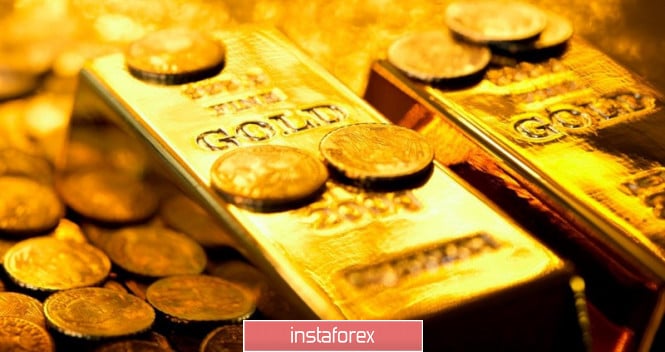
This month, the gold exchange rate reached six-year highs amid softening policies of leading central banks.
The main question, which now, apparently, worries many traders, is whether the precious metal rally will continue, or are we already at the peak of the "bullish" phase of the cycle?
According to analysts at Citigroup, the prospects for gold are very favorable.
As factors that will support the precious metal, analysts call the increasing risks of a global recession and the likelihood of the Fed cutting its rate to zero.
Recall, September 18, the US Federal Reserve for the second time in a year lowered the interest rate by 0.25%, to 1.75–2%.
At first glance, the regulator did not have to lower the rate: there has not yet been an economic downturn, and the stock market is at its peak.
What circumstances force the Fed to cut rates?
First of all, the slowdown in the global economy. Against this background, a high interest rate in the United States with falling rates in Europe and Asia leads to the flight of capital from around the world to America, which pushes the USD exchange rate upward, reducing the competitiveness of the US economy. This is the main reason why the head of the White House, Donald Trump, is constantly criticizing the Fed, urging him to lower the federal funds rate.
However, what will need to be monitored in the coming years is not only the interest rate of the Federal Reserve (it is unlikely to be lowered below zero), but the size of its balance sheet, which is expected to grow many times over.
According to the forecast of the Budget Office of the US Congress, in 2020 the country's state budget deficit will amount to $1 trillion, in another two years - $1.1 trillion, and by 2028 - $1.45 trillion.
The US Ministry of Finance will cover it at the expense of debt, placing government securities and pulling dollar liquidity from the markets.
In other words, the lack of dollars is not a random phenomenon, but a systemic problem that the Fed is unlikely to be able to solve by applying " temporary patches"," Goldman Sachs analysts said.
According to them, the Fed will again have to start "printing money", increasing the balance sheet and buying up assets without the ability to stop at least until 2021.
"We believe that the fourth round of quantitative easing will start in November. According to our estimates, the Fed will fill in the system at $15-20 billion per month. By mid-2021, the volume of operations could be reduced to about $10 billion. In just three years, $375 billion will enter the market through QE," Goldman Sachs said.
Citigroup predicts that over the next two years, gold may rise in price up to $2000 per ounce.
"We expect the precious metal rate to grow and possibly overcome the mark of $2,000 per ounce, updating record highs in the next two years," they said.
The material has been provided by InstaForex Company - www.instaforex.com